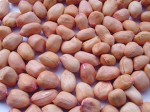Visão da Crown sobre otimização de plantas de Biodiesel
16 maio 2013
Compartilhar:
Artigo de Derek Masterson , Gerente de vendas
“Derek Masterson, product sales manager with Crown Iron Works, says, “When we design a biodiesel plant, we follow the philosophy that we don’t want to discharge any water. We push any excess water into the glycerin for glycerin refining. You have a choice—you can make good biodiesel and pretty good glycerin or you can make biodiesel and shove all your problems in the glycerin, and we’re not about shoving the problems into the glycerin. We think that’s the wrong thing to do because then you have a poor-quality crude glycerin. So in the biodiesel plant, we’re trying to do a good job separating the biodiesel and the crude glycerin, recovering the methanol from the crude glycerin to end up with what I’d call ‘nice, crude glycerin.’ So out of that you’re going to end up with salts and a little bit of fatty acids and other organics and that could be 5 to 10 percent of your crude glycerin.”
“There’s a possibility to have a no-waste plant by just selling what you don’t need or throwing it into other products,” he says. “That’s been done for decades. I think the small producers are figuring out that they have small amounts of waste and it’s a good idea to do something with it, whereas on a large scale, those problems were already solved because they were such big problems that they have done something about it already. If you got a huge problem, you gotta take care of it. If you have a small problem, maybe you don’t.” Masterson says maybe plants that were inefficient before are becoming more efficient, and that waste streams may already be taken care of in certain process technologies themselves. Perhaps cruder technologies produce more waste that must find a home.”
http://www.biodieselmagazine.com/articles/8907/zero-waste-and-plant-optimization

